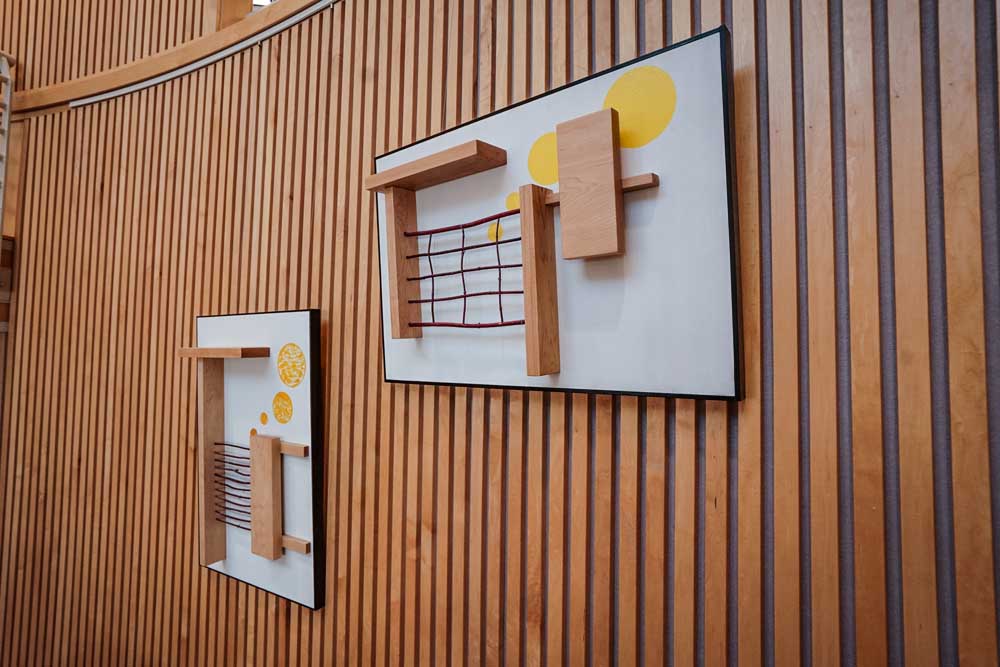Dreamy exhibit in Bend
Published 12:00 am Thursday, February 28, 2019

- “If Trees Could Dream,” featuring works by artist Ted Gladu, includes these wall hangings. The exhibit displays through March 21 in the rotunda of Barber Library, on COCC’s Bend campus. (Scott Nelson/Submitted photo)
Ted Gladu studied art in college, then made his living as a carpenter, cabinetmaker and architectural designer in the years before he retired.
In retirement — make that “retirement” — Gladu’s managed to synthesize his education and vocations into an artistic approach: wooden sculpture, installation and painting.
“My long suit is obviously having been a cabinetmaker and woodworker, so I certainly use the same tools, a lot of them,” he said.
Gladu’s recent one-man, one-day show late last year at The Environmental Center in Bend proved so successful that the artist is back with a bigger, longer-running exhibit, “If Trees Could Dream.” The 19 pieces in the show display through March 21 in the rotunda at Barber Library on Central Oregon Community College’s Bend campus.
In the show, Gladu captures, in wood and paint, his feelings on the interrelated connections that exist in the natural world. He’s particularly keen on the Fibonacci Sequence, a classic mathematical series of numbers — 0, 1, 1, 2, 3, 5, 8, 13, and so forth — the next occurring number found by adding together its two preceding numbers. If you were to trace it expressed in squares, the Fibonacci series takes on a spiral shape.
“It’s the basis of everything,” Gladu said while showing examples of that shape in the works peppering his artfully appointed Tumalo home, which he restored himself.
“That is actually the same shape as the DNA helix, and it’s the same shape as the galaxy. I mean, literally, mathematically, exactly the same. If you look at the end of a pine cone, you will see that whorl. Much of his work is created using pruned juniper branches, along with smaller red willow, commonly found along rivers.
“This is just out-in-the-yard, chop-it-off-the-tree, fire-safety wood,” he said. “All of this wood is fire-safety wood, believe it or not, pruning up the trees to 4 feet off the ground.”
Along with the standing sculptures, Gladu’s been making hanging pieces, a better fit for gallery exhibits, he said. These, too, make use of juniper and willow.
“A lot of my art is around shared DNA,” he said. “We have these trees that I’ve sort of given consciousness to. The big thing about the trees is that we share DNA — more DNA than we probably care to admit.”
Visitors will see 19 of his works in the Barber Library exhibit. More than a show of disparate works, he envisions it more as an installation when amassed together. At the center of the rotunda area Gladu has intentionally placed the tallest of his twisting juniper sculptures. It’s so tall he can’t stand it upright in his garage-turned-studio.
“I think of it, like, this is the subconscious,” he said. It’s painted black, unlike the other, smaller pieces he’s built, which “are the expressions of the subconscious. The dreams.”
And just like that, the title of the show makes perfect sense.
On the circular base he built for the subconscious centerpiece, Gladu has painted small lines radiating outward to represent — well, let’s let him explain:
“We have all of these — I’m pretty symbolic — DNA arrows sort of shooting out to infuse all of these dreams with that shared DNA,” Gladu said, adding with a laugh. “That’s what happens when you spend too much time in a room like this.”
Editor’s note: This story has been corrected. In the original version, the closing date of the show was misidentified. It closes March 21. The Bulletin regrets the error.






